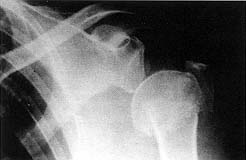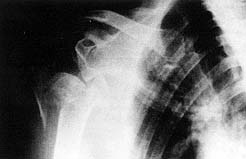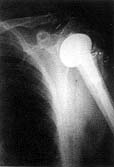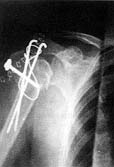Annals of Burns and Fire Disasters - vol. XIII - n. 3 - September 2000 BILATERAL SHOULDER FRACTURES FOLLOWING LOW-VOLTAGE ELECTRICAL INJURYDuman H., Kopal C., Selmanpakoglu N. Department of Plastic and Reconstructive Surgery and Burn Centre, Gülhane Military Medical Academy, Ankara, Turkey SUMMARY. Bilateral shoulder fractures resulting from high energy such as traffic accidents or falls from height are usually associated with thoracic, craniofacial, and spinal injuries. The mechanism of shoulder fractures caused by low-voltage electric shock is quite different from those caused by high energy. Such fractures may be due to tetanic muscle contraction involving the upper extremities and shoulder girdles. This study presents a case of bilateral shoulder fracture after a low-voltage electrical injury. Introduction Since they require trauma with high energy, bilateral shoulder fractures are not frequently seen. We report a case of simultaneous bilateral shoulder fractures caused by a 220 V electric shock without direct trauma and we discuss its pathomechanical origin. Most fractures due to electrical contact are caused by strong muscle pull. Case report A 56-year-old female sustained an electric shock when touching a washing-machine. After the shock, she pulled back her hands within seconds and did not fall or hit anything. She immediately felt bilateral shoulder pain, without losing consciousness. Later she was admitted to the regional clinic with bilateral pain in the shoulders. Bilateral shoulder fractures had not been noticed during the initial physical examination performed at the regional clinic and she had been advised to take anti-inflammatory drugs. After 18 days the patient was admitted to our burn centre, complaining of pain, ecchymosis, and bilateral swelling in the arms and shoulders. On physical examination no entry or exit burns were noted. Inability to abduct the arms and weakness of the elbow and wrist were determined, with normal range of motion. The cervical and thoracic spine was non-tender and there was full range of motion in the neck. Radiography showed bilateral shoulder fracture, including the glenoid process and the head of the humerus (Figs. 1,2). The fractures were successfully operated on the by orthopaedic surgeon. Internal reduction and fixation were performed using nail, lag screw, and K-wire in the right shoulder and shoulder arthroplasty in the left shoulder (Figs. 3,4). The post-operative period was uneventful and the patient gained full active range of motion in three months. The follow-up X-ray film showed good union.
Discussion Bilateral shoulder
fracture is usually caused by direct trauma such as traffic accidents and falls. Shoulder
fractures due to electric shock without direct trauma are rare and frequently missed.
Fractures resulting from high energy are usually associated with other injuries such as
thoracic, craniofacial, and spinal injuries, unlike fractures from low electric shock. Few
cases have been reported in the literature in which fractures were caused directly by
electric shock without falling, but typically involving bones surrounded by large muscle
bulk, such as the vertebrae, proximal femur, scapula, and proximal humerus.
BIBLIOGRAPHY
|



